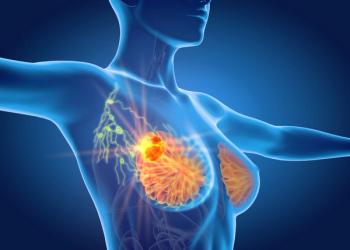
Dose-Intense Chemotherapy Improves Outcomes in Early Breast Cancer
Increasing chemotherapy dose intensity reduced the risk of recurrence and death over standard chemotherapy regimens, according to a meta-analysis of women with early-stage breast cancer.
Increasing chemotherapy dose intensity reduced the risk of recurrence and death over standard chemotherapy regimens, according to a meta-analysis of women with early-stage breast cancer. The dose intensity can be increased by either reducing the intervals between cycles, or by administering the regimen’s drugs sequentially instead of concurrently.
“Giving chemotherapy with an anthracycline and a taxane can reduce the chance of a woman dying of breast cancer by about a third,” said Richard Gray, MSc, of the University of Oxford in the United Kingdom, during a press conference. “We’re still trying to find ways of improving how we deliver this chemotherapy.” Gray presented results of the NSABP-B-47 trial, examining various dose intensification trials, at the 2017 San Antonio Breast Cancer Symposium (SABCS), held December 5–9.
The meta-analysis included 25 trials and more than 34,000 patients in total. Some trials tested a dose-dense regimen of chemotherapy every 2 weeks vs every 3 weeks, others tested a sequential approach vs concurrent therapy, and a third set tested a sequential regimen every 2 weeks with a concurrent regimen every 3 weeks. Some of the trials used the exact same chemotherapy agents, while in some there were differences between the exact drugs used.
“We were surprised by how strong and consistent the findings from our study were,” Gray said, according to a press release.
The more intense regimens offered substantial benefit over standard regimens. In trials where the drugs were exactly the same, the every-2-week approach yielded a rate ratio (RR) for any recurrence of 0.83 (95% CI, 0.76–0.91; P = .00004). The RR for breast cancer mortality was 0.86 (95% CI, 0.77–0.95; P = .004), and the 10-year breast cancer mortality rate was 16.8% with every-2-week dosing and 19.6% with every-3-week dosing.
A similar result was seen for sequential vs concurrent dosing. For recurrence, the RR was 0.87 (95% CI, 0.80–0.94; P = .0006), and for breast cancer mortality, the RR was 0.89 (95% CI, 0.80–0.99; P = .03).
In the trials comparing sequential every-2-week dosing and concurrent every-3-week dosing, the RR for recurrence was 0.82 (95% CI, 0.74–0.91; P = .0001) and for breast cancer mortality it was 0.82 (95% CI, 0.73–0.93; P = .001). In a pooled analysis of all 25 trials, the RR for recurrence with dose-intense therapy was 0.85 (95% CI, 0.81–0.89; P < .00001), and for breast cancer mortality it was 0.87 (95% CI, 0.82–0.92; P < .00001).
“Increasing the dose intensity of chemotherapy reduces recurrence and death from beast cancer by about 15%,” Gray concluded.
Virginia G. Kaklamani, MD, of UT Health San Antonio and a co-director of SABCS 2017, added that the traditional approach involved chemotherapy delivered over 6 months, while this suggests it can be done with better efficacy over 4 months. “So the patients prefer it,” she said. “Everybody wins here.”
Newsletter
Stay up to date on recent advances in the multidisciplinary approach to cancer.

















































































